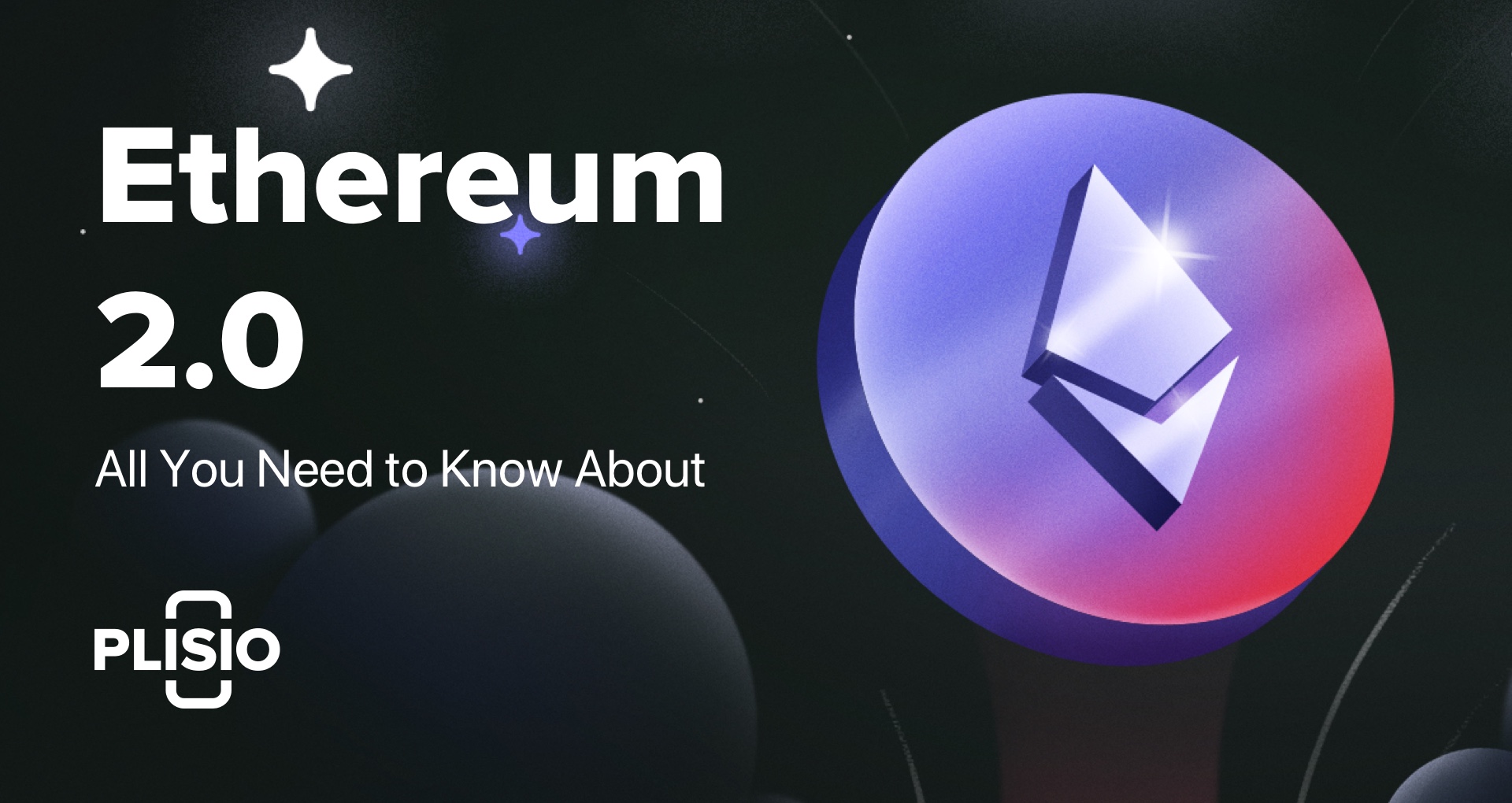All You Need to Know About Ethereum 2.0

What is all this fuss about Ethereum 2.0, Serenity, the new Ethereum 2.0 code name, is a major upgrade to the Ethereum network. The prior goal of Ethereum 2.0 is to address the Ethereum Classic long-standing issues and make it a more decent alternative to the main cryptocurrency - Bitcoin. Let’s take a look at the upcoming Ethereum alterations below.
The key changing upgrades of Ethereum 2.0
The very first Ethereum blockchain upgrade is meant to enhance the number of aspects, such as:
Transaction speed. Even though the existing Ethereum transaction speed is still way ahead of Bitcoin’s, there is always room for improvement. The transaction speed will no longer be dependent on the gas fee you pay.
Transaction efficiency. This is related to the lower gas fees and peak usage performance. Those no longer will be connected; the ecosystem will be very smart optimized in order to sustain the users’ activity.
Security. The Ethereum 2.0 security system will be invincible towards most of the coordinated attacks, like if someone is in control of the greater network part and can force some self-interest changes.
The Ethereum 1.0 issues
Nothing is perfect and Ethereum is no exception. Serenity solution is based on the following problems:
Scalability. Ethereum Classic cannot provide for a larger number of transactions per second than 15 to 45, which causes major constrictions for the network performance. With the increasing number of Dapps (decentralized apps), the transaction number also goes high. When there are more transactions than a separate node can handle, there is a need for more resources. Hence, ridiculously high gas prices that we all are so eager to avoid. This is the most prominent Ethereum disadvantage for today.
Mining difficulty. Everyone has heard about the Ethereum “difficulty bomb” - a system built-in regulation that can in theory block the currency mining over time thus making the mining process unfairly difficult and unproductive as the mining rewards shrink respectively.
Outdated security standards. Though it is far from being the most significant issue to address, the network suffers from fraudulent activity all the same. Smart contracts, the key aspect of Ethereum operation, deal with cash assets. A contract cannot be reversed or corrected which makes it easier for frauds to deal with.
In any rate, Ethereum is a very reliable crypto asset. If you’re looking for ways to globalize your outreach and start accepting crypto for your business, there are plenty of ways to get you started. Plisio, for instance, has a very wide range of accepted cryptocurrencies, Ethereum included. With Plisio, you don’t need to occupy yourself with high fees or any other expenses that affect your revenue. An extremely easy integration, the most convenient terms and no KYC procedures is just what your business needs at these challenging times.
Ethereum 2.0 vs Ethereum Classic
What is the Serenity answer to the Ethereum 1.0 current challenges? There are two main operations principles that will fix the above stated issues.
Proof of Stake
The present Ethereum Classic uses Proof of Work consensus mechanism. In PoW, building blockchain blocks depends merely on electricity supply and miners’ activity. Proof of Stake is something totally different -- the upgraded scalability allows for the network users themselves to be validators. In PoS operation principle, the block validation is called “forging”; the validator’s reward is subject to successful block suggestion. It depends either on whether you’ve seen a block, or on how much Ethereum you’ve staked and for how long. Within such stake pools, a node wins a block with transactions number, not just by sole power amount.
The best PoS aspects are without doubt energy efficiency as there is a need for a great amount of computing power and no competition among miners.
Sharding
Beacon chain is an upgraded scalability mechanism that involves blockchain partitioning into smaller shards. This will enhance the Ethereum data capacity by dividing data manipulation among different nodes. In other words, instead of the sequential transaction processing, all the network transactions will be processed at the same time.
This upgrade will affect both the Ethereum scalability and security. With Ethereum 2.0 being more decentralized, the number of validators will also increase thus making transactions safer and more transparent.
Is it worth the wait?
The short answer is YES. Every aspect of the Ethereum 2.0 is designed to fix the current Ethereum Classic problems. The global system of smart contracts Ethereum is now moving towards greater improvements, among which are enhanced transaction speed, security, reliability and much better scalability.
Another question is when to aspect it to be launched. There are three phases that are introduced consecutively: Phase 0 (Beacon Chain), Phase 1 (Shard Chain) and Phase 2 (Execution Engine). Phase 0 launched in December 2020. The following phases, though, are not expected sooner than 2022. Unfortunately, there might be some unforeseen delays, considering the current state of the world we live in.
The best you can while waiting for Ethereum 2.0 to be fully released, is set up crypto payments for your business or enterprise. Nothing will boost your revenue as good as adding an additional payment option. It is not only safe and efficient, but also great to get rid of any excessive bureaucracy. Plisio will help you with starting out by providing full assistance and introducing you to a new tear of potential profits and opportunities!
